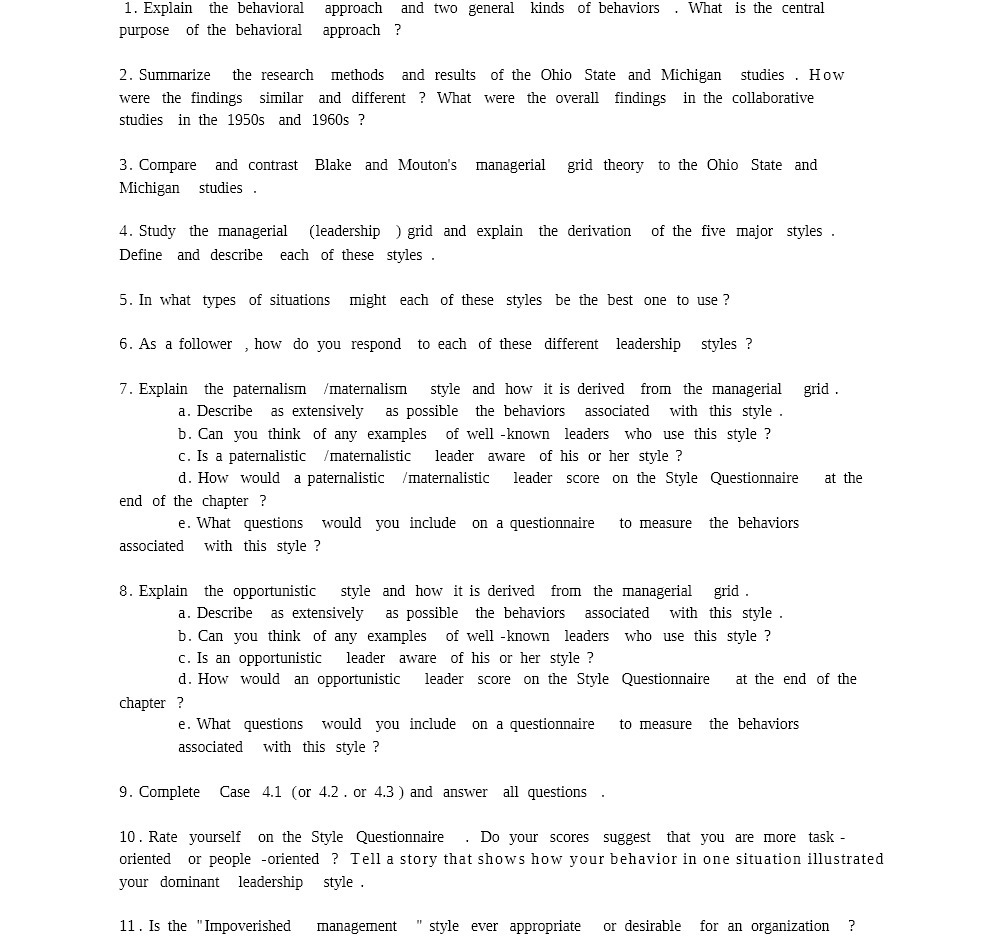1. Explain the behavioral approach and two general kinds of behaviors . What is the central purpose of the behavioral approach ? 2. Summarize the research methods and results of the Ohio State and Michigan studies . How were the ndings similar and different ? What were the overall ndings in the collaborative studies in the 19505 and 19505 ? 3. Compare and contrast Blake and Mouton's managerial grid theory to the Ohio State and Michigan studies . 4. Study the managerial [leadership )grid and explain the derivation of the five major styles . Dene and describe each of these styles . 5. [u what types of situations might each of these styles be the best one to use? 5.215 a follower , how do you respond to each of these different leadership styles ? 7. Explain the paternalism frnaternalism style and how it is derived from the managerial grid. a. Describe as extensively as possible the behaviors associated with this style. b. Can you think of any examples of well known leaders who use this style ? c. 15 a paternalistic fmaternaiistic leader aware of his or her style ? d. How would a paternalistic ln'raternalistic leader score on the Style Questionnaire at the end of the chapter ? e. What questions would you include on a questionnaire to measure the behaviors associated with this style ? 8. Explain the opportunistic style and how it is derived from the managerial grid. a. Describe as extensively as possible the behaviors associated with this style. b. Can you think of any examples of well -known leaders who use this style? c. Is an opportunistic leader aware of his or her style ? d. How would an opportunistic leader score on the Style Questionnaire at the end of the chapter ? e. What questions would you include on a questionnaire to measure the behaviors associated with this style ? 9. Complete Case 4.1 (or 21.2 . or 4.3 ) and answer all questions it}. Rate yourself on the Style Questionnaire . Do your scores suggest that you are more task oriented or people -oriented ? Tell a story that shows how your behavior in one situation illustrated your dominant leadership style. 11.15 the "lmpoverished management " style ever appropriate or desirable for an organization







